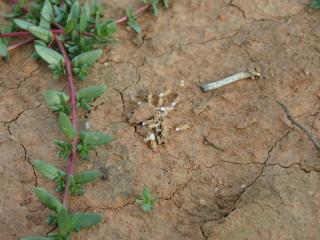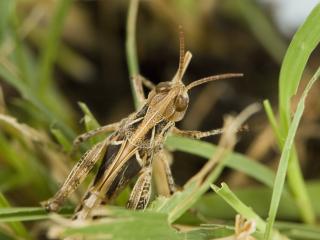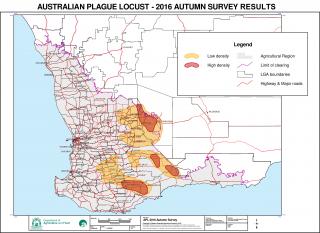Regional landholders in the grainbelt are advised to inspect properties for locust activity and be prepared to implement control activities during spring.
The Department of Agriculture and Food is predicting significant numbers of Australian plague locusts (APL) will build up during spring in eastern and southern parts of the grainbelt.
Department Invasive Species acting director Malcolm Kennedy said hatchings were expected to occur from September.
Surveys by the department have indicated moderate density hatchings could occur in parts of Ravensthorpe, Jerramungup, Gnowangerup, Narrogin, Kulin, Yilgarn, Westonia, Mukinbudin and Nungarin shires. In these areas, some locust bands and loose swarms are expected to form.
Variable hatchings are also likely in other parts of the southern agricultural region and eastern Wheatbelt.
“It is vital that landholders control locusts by spraying paddocks at the right time to minimise damage to valuable pastures and crops where locusts emerge and feed,” Dr Kennedy said.
“Locusts will hatch at variable times and landholders should be checking their properties from early September for signs of locusts to determine when to start spraying. Green crops and pasture are most at risk from locust damage.”
Landholders who observed locusts on their properties in autumn need to be particularly vigilant as there are likely to be egg beds which will hatch in spring.
“The main activity will be seen in pastures - look for early hatchings and hatching egg beds in places where there are bare areas such as around dam banks, roaded catchments and along fencelines,” he said.
While it is up to landholders to control locusts on their property, the department will assist with monitoring and surveys, and provide advice to landholders on the best control options and when to start spraying.
Landholders are also encouraged to use the department’s PestFax Reporter app to report where locusts are found.
Registered chemicals are commercially available, and landholders are reminded of the importance of complying with label regulations, particularly withholding periods.
Information on locust identification, monitoring and control is available on the department website or by phoning the Pest and Disease Information Service on 1800 084 881 or emailing info@agric.wa.gov.au.
More information will be available from the department at the upcoming Dowerin and Newdegate field days.



Media contacts: Jodie Thomson/Lisa Bertram, media liaison +61 (0)8 9368 3937
